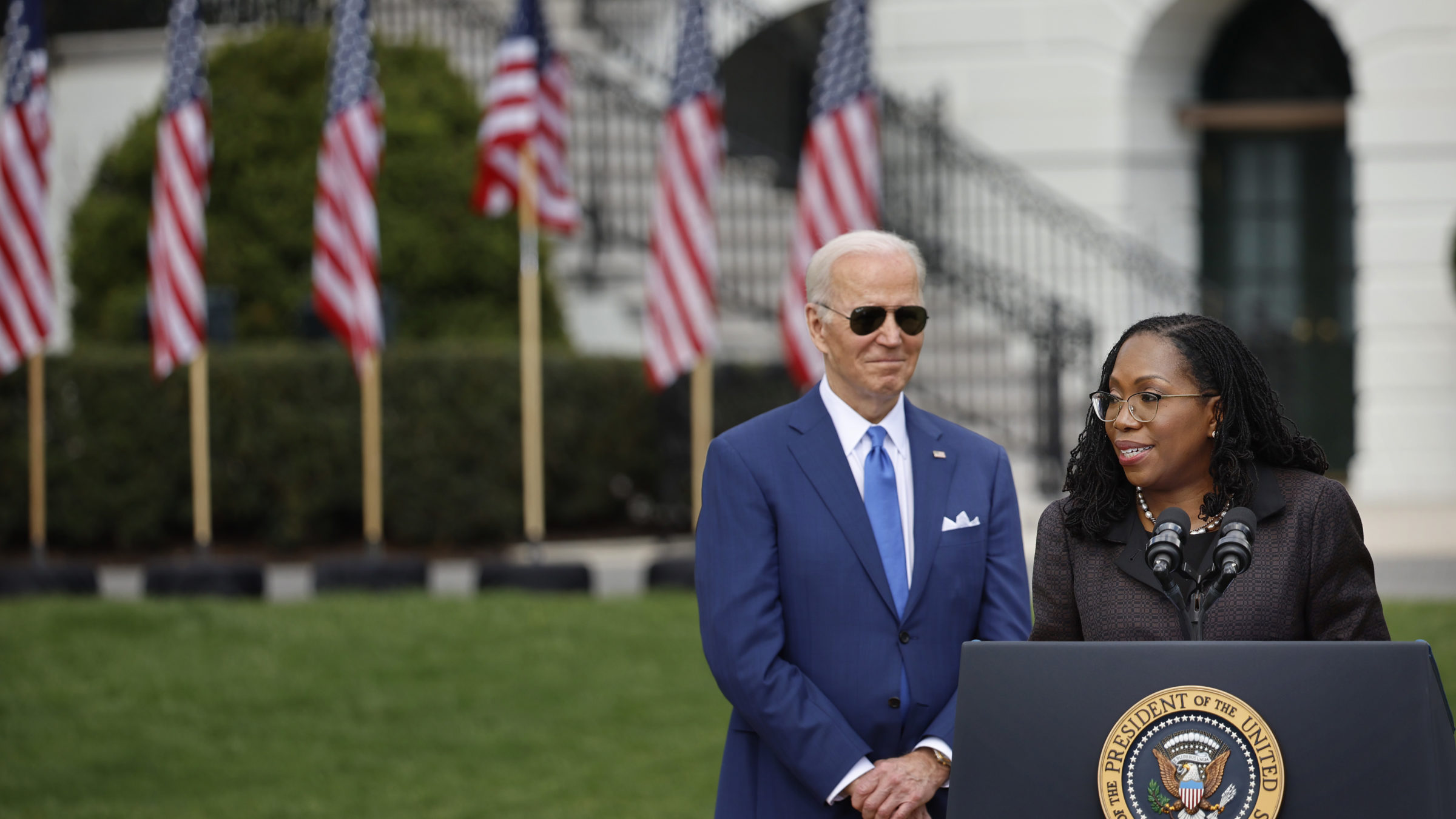When Donald Trump won the U.S. presidency in 2016, the conservative Federalist Society was ready with a long list of far-right prospective judges for him to consider. At the time, there were more than 100 vacancies on the lower courts, including 17 on the federal appeals courts and one on the Supreme Court, thanks to Senator Mitch McConnell’s unprecedented efforts to obstruct President Barack Obama’s nominees in the last two years of his presidency.
With these carried-over vacancies from Obama’s presidency, plus new ones that arose, Trump ultimately delivered more than 200 judges with lifetime appointments—a record number of whom the American Bar Association had deemed “unqualified.” Seemingly, the most important qualification for Trump nominees was an affiliation with the conservative legal right.
It was a wakeup call for Democrats, who seemed to have learned their lesson since retaking the Senate and the White House in 2020. To play catch-up, Democrats have been pushing nominations through the confirmation process at a healthy clip, occasionally forcing additional procedural votes called discharge motions to move nominees to a full Senate vote, when Republicans on the Senate Judiciary Committee held up several of President Joe Biden’s nominees. Now, two years into his first term, Biden is outpacing Trump when it comes to judicial confirmations, with 97 confirmed judges as senators head home for the holiday break.
Biden’s successes are not just about raw numbers; he has outpaced all other presidents in his efforts to diversify the federal judiciary in terms of race, gender, and professional background. More of Biden’s appeals court judges come from public defender backgrounds than any prior president. Two-thirds of his confirmed judges are people of color, including Justice Ketanji Brown Jackson, the first Black woman justice in the history of the Supreme Court.
This is a welcome change: About 71 percent of federal judges are white, according to 19th News, and former prosecutors outnumber former defense attorneys within the federal judiciary by about four to one, according to an analysis by the Cato Institute. While the professional background of any single judge doesn’t dictate a specific case outcome, a judiciary that is more balanced with the perspective of advocates who defended those accused of crimes, held the government accountable for its constitutional violations, and represented consumers suing corporations means defendants and plaintiffs alike are more likely to get a fair shake.
Judicial confirmations—which are wholly controlled by the Senate—are now all the more critical in moving the party’s agenda forward. As the Democrats lost the House of Representatives during the midterm elections, passing major bills will likely come to a near-standstill (at least on signature legislation, like the Infrastructure and Jobs Act, which passed earlier this year). But after the 2022 midterm elections, the Senate is now divided 51-49 in favor of the Democrats, a slight improvement from the deadlocked 50-50 division of this past Senate. Although Arizona Senator Kyrsten Sinema, until recently a Democrat, has announced that she’ll switch her party affiliation to independent, she has been a reliable vote for Biden’s nominees and says she will continue to caucus with the Democrats. Assuming she does so, Senate Democrats should be able to move full steam ahead with confirming judges to lifetime appointments.

When you’re ahead of predecessor’s judicial confirmations pace (Photo by Chip Somodevilla/Getty Images)
Excluding vacancies on the Court of International Trade, Biden will have a total of 111 judgeships to fill during the 118th Congress. He will likely start by renominating the 44 prospective judges whose still-pending nominations will expire at the end of this Congress. (This week, he announced six additional nominees whom he will formally nominate when the new Senate convenes next year.) Armed with a slight majority in the Senate, Democrats should be able to more easily confirm current nominees without having to clear the procedural hurdles associated with discharge petitions.
Even with this recent success, Democrats need to be aggressive on more procedural fronts if they want to fill the remaining vacancies. Take the antiquated Senate procedure known as “blue slips,” which requires both senators from the state in which a nominee will serve to return literal blue slips of paper before a nomination can go forward. In 2016, McConnell and Senate Republicans did away with the practice for appeals court judges in order to confirm 17 Trump nominees that the Democrats opposed. But Senate Democrats have preserved the practice for district court nominees; “I want to respect the blue slips,” said Judiciary Committee Chair Dick Durbin this week. As a result, the majority of Biden’s district court confirmations have been in states with two Democratic senators—and the benefits of a more diverse judiciary have not been spread around the country. Reforming or outright eliminating the practice will be crucial in filling district court vacancies in states with GOP senators.
Biden also has a lot of work ahead if he wants to rebalance the courts of appeal, which have the final say over cases the Supreme Court does not review. Trump transformed these courts while in office, appointing over one-third of the 179 federal appeals court judges and flipping the composition of multiple circuits from majority-Democratic appointees to majority-Republican appointees. Many of his nominees were ideologues like Kyle Duncan—one of the lawyers that successfully got Hobby Lobby off the hook for paying for its employees’ reproductive healthcare.
The Republican members of the Senate Judiciary Committee have delayed some of Biden’s appeals court nominations by keeping them deadlocked in the evenly-split Committee, thereby preventing a full Senate vote. This year, of Biden’s 37 appeals court nominees, the Senate failed to finish the confirmation process for nine of them; he’ll need to renominate them when the new Senate convenes next year.
In the previous administration, McConnell and Trump doubled down on already-existing asymmetries within a judiciary composed largely of those who are white, male, or former prosecutors. Many of these judges have since contorted the law to fulfill conservative policy and political goals. Judge Drew Tipton, for example, rewrote immigration law to block Biden’s attempts at rolling back Trump-era immigration policies like Title 42, which closed the border to asylum seekers under the guise of stopping COVID-19 spread. And Judge Aileen Cannon manipulated criminal procedure to grant Trump special privileges, such as the return of personal documents confiscated as part of the ongoing FBI investigation, before a court of appeals reversed her decision. In just one term, McConnell and Trump had a dramatic impact on the judiciary that will outlast Trump’s four years as president.
It will take longer than one presidential term to undo this damage, let alone fundamentally reshape an institution that has long skewed in favor of corporations and against criminal defendants. But with a bare majority in the Senate, Democrats can push forward judicial candidates, many of whom have civil rights and public defender backgrounds, with relative ease.

